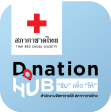Chulalongkorn Hospital's Integrated Cancer Center Project.

Cancer:
The Number 1 Cause of Death in Thailand
The Cancer Situation in Thailand
Cancer is the
leading cause of death in Thailand, claiming the lives of approximately 84,000
people each year. There are over 140,000 new cancer patients annually, which
equates to about 400 new cases every day. This
number continues to rise, and the exact cause of this increase remains unclear.
The
five most common types of cancer in Thailand are:
·
Liver
and bile duct cancer
·
Lung
cancer
·
Breast
cancer
·
Colorectal
cancer
·
Cervical
cancer
The number of
new cancer patients is increasing due to the rising incidence of the disease. King
Chulalongkorn Memorial Hospital, Thai Red Cross Society, sees approximately 350
new and returning patients in its OPD daily. The current inpatient service area
is limited, requiring patients to register and be examined at the Phor Por Ror
building along with patients suffering from other illnesses. Additionally, since most cancer patients are unable
to help themselves, they often bring at least two relatives, bringing the total
number of people to about 1,000 per day. This overcrowding at the Phor Por Ror
building increases the risk of infection.
Furthermore,
advancements in cancer treatment technology for both diagnosis and treatment
require new patients to see multiple cancer specialists across several
appointments before receiving appropriate treatment. The schedules of these specialists
don't always align, forcing patients to make multiple appointments. The
buildings currently used for cancer treatment are old and have limited space,
making it impossible to expand inpatient services. The hospital's radiology
equipment is also old and needs to be replaced. These machines are essential
for providing radiation therapy to more than 2,500 patients a year, so there's
an urgent need for additional equipment.
Chulalongkorn Hospital's Integrated Cancer Treatment Center
King Chulalongkorn
Memorial Hospital, Thai Red Cross Society, has a plan to upgrade its cancer
care capabilities by renovating four old buildings—Kakkhanang and
Navamindrarajini buildings, the Elisabeth building, and the Wongwanit building—into
the Integrated Cancer Treatment Center. This new center will be a
9-story building connected to the 11-story Navamindrarajini building, allowing
for an expansion of services to accommodate more cancer patients.
The
total cost of this project is estimated at 1.227 billion Baht. This
includes costs that aren't covered by government subsidies, such as procuring
new medical equipment for screening, diagnosis, and treatment to replace the
old machines. The project began in 2017 and is scheduled to be completed in
2026. In 2025, Thai Red Cross Society must
urgently raise around 600 million Baht to ensure the Integrated Cancer
Treatment Center can open on time in 2026.
Project Goals:
The Integrated
Cancer Treatment Center will be able to accommodate a greater number of
cancer patients, significantly improving their quality of life.
·
Outpatient Capacity: The current
OPD capacity of 300 patients per day will increase to 400 patients per day due
to the expanded service area.
·
Radiology & Diagnosis: The waiting
period for a diagnosis with radiology equipment is projected to be reduced from
six months to no more than two months.
·
Chemotherapy: For walk-in patients, the
hospital's ability to provide chemotherapy will increase from 80% to 100%,
serving approximately 150 more patients per month.
·
Scheduled Appointments: The number of
patients with scheduled appointments will increase from 1,200 to 1,900 per
month.
·
Thyroid Cancer (IPD): The inpatient
waiting period for thyroid cancer treatment will be reduced from 10-12 weeks to
no more than 5 weeks.
·
Thyroid Cancer (Day Care): The number of
patients receiving radioactive mineral treatment on a day-care basis will
increase from 5 to 10 patients per month.
·
Reduced Patient Journey: The number of
steps for a patient to see a doctor will be reduced from more than six to
approximately four to five steps, shortening the diagnostic process by one to
two months.





